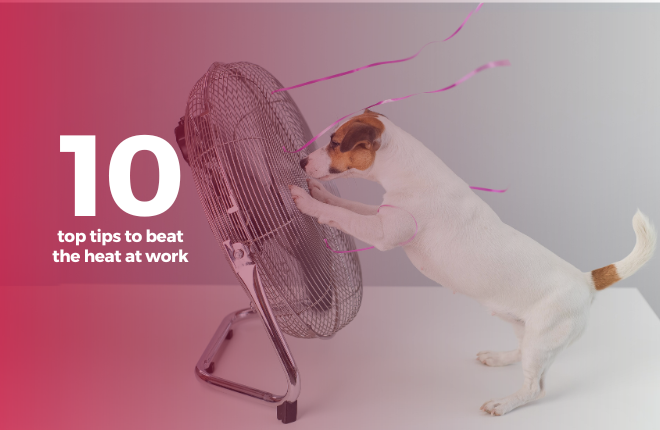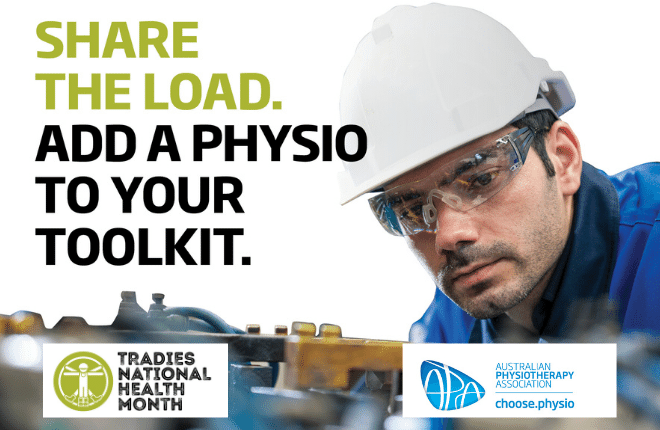Beat the Heat: Essential Tips for Safe Work

Workers across various industries often find themselves navigating the challenges of working in hot environments, whether indoors or outdoors. You could be working in a warehouse, manufacturing plant, collecting rubbish, standing outside working at an event or in an office. While outdoor work in the heat is commonly discussed, indoor settings are often missed and can also pose significant risks.
Working in the heat can cause heat-related illness including fainting, heat rash, heat cramps, heat exhaustion, and heat stroke. Working in hot weather can also cause dehydration, burns, and can even reduce concentration and change the way any of your prescribed medications work.
Top 10 tips to beat the heat
Here are 10 essential tips for workers to beat the heat and ensure your safety, even when working indoors in hot conditions.
1. Check the Weather and Plan Ahead
Stay informed about the weather forecast and plan accordingly. Plan tasks accordingly, scheduling strenuous activities during cooler times.
2. Dress Appropriately
Choose lightweight and breathable clothing even when working indoors. Opt for loose-fitting garments that allow your body to cool naturally. If possible, wear light-coloured clothing to reflect, rather than absorb, the heat. Dressing appropriately is key to staying comfortable and preventing overheating.
3. Hydration is key
Hydration remains crucial regardless of whether you’re working indoors or outdoors. Indoor environments can still lead to dehydration due to elevated temperatures and limited airflow. Keep water readily available and drink it regularly throughout your shift to prevent heat-related illnesses. Avoid caffeine, soft drinks and alcohol.
4. Take Breaks Regularly
Schedule breaks to cool down and rehydrate. Step into cooler areas during breaks to give your body a chance to cool down. Use this time to rehydrate and rest, especially if your work involves physical exertion.
5. Protect Yourself from the Sun
If working outdoors, ensure you protect yourself appropriately. Wear a wide-brimmed hat to shield your face and neck from the sun, and use a high SPF sunscreen on exposed skin.
6. Ventilation Matters
Indoor spaces can heat up quickly, especially if they lack proper ventilation. Ensure that work areas have adequate airflow by using fans or air conditioning systems. Proper ventilation not only helps regulate temperature but also improves air quality, creating a more comfortable and safer working environment. High humidity levels can exacerbate the feeling of heat indoors. Monitor humidity levels, and if necessary, use dehumidifiers to create a more comfortable working environment. Lower humidity levels can contribute to better heat dissipation and overall well-being.
7. Personal Cooling Devices
Consider using personal cooling devices, such as handheld fans or cooling towels, to enhance your comfort indoors. These items can be particularly beneficial in areas where ventilation may be limited. Be mindful of any workplace policies regarding personal devices.
8. Be Mindful of Heat-Producing Equipment
Certain indoor jobs involve the use of heat-producing equipment or machinery. If possible, schedule tasks involving such equipment during cooler parts of the day. Additionally, use appropriate personal protective equipment (PPE) to minimize direct exposure to heat sources.
9. Know the Signs
Educate yourself on the symptoms of heat-related illnesses, such as heat exhaustion and heatstroke. If you experience symptoms like dizziness, rapid heartbeat, nausea, or confusion, move to a cooler area, hydrate, and advise your supervisor and Horner consultant. Seek medical attention if necessary.
10. Collaborate with co-workers/colleagues
Look out for one another in the workplace. If a co-worker/colleague shows signs of struggling with the heat, encourage them to take a break and hydrate.
Working in hot environments, whether indoors or outdoors, requires a proactive approach to ensure the safety and wellbeing of workers. By maintaining proper ventilation, staying hydrated, dressing appropriately, taking regular breaks, using personal cooling devices, being aware of heat-producing equipment, monitoring humidity levels, and fostering a culture of education and communication, workers can beat the heat and create a safer working environment. Stay cool, stay safe!

 Job Seekers
Job Seekers Resources
Resources Timesheets
Timesheets Submit a CV
Submit a CV Login
Login Temporary Staffing Solutions
Temporary Staffing Solutions Permanent Recruitment Solutions
Permanent Recruitment Solutions Executive Search
Executive Search Payroll Services
Payroll Services Employer Resources
Employer Resources HR Services
HR Services WHS Consulting
WHS Consulting Outplacement / Career Transition
Outplacement / Career Transition Accounting and Finance
Accounting and Finance Business Support
Business Support Community Services
Community Services Customer Service
Customer Service Engineering
Engineering Events and Exhibitions
Events and Exhibitions Government
Government Healthcare
Healthcare Labour Hire
Labour Hire Manufacturing
Manufacturing Not-for-profit
Not-for-profit Sales and Marketing
Sales and Marketing Warehousing and Logistics
Warehousing and Logistics About us
About us Meet the Team
Meet the Team Blog
Blog Community
Community Join the Team
Join the Team Candidate Timesheet
and Portal Information
Candidate Timesheet
and Portal Information Blog
Blog Join the Team
Join the Team Payroll Services
Payroll Services Timesheets
Timesheets Customer Service
Customer Service Engineering
Engineering Warehousing & Logistics
Warehousing & Logistics

